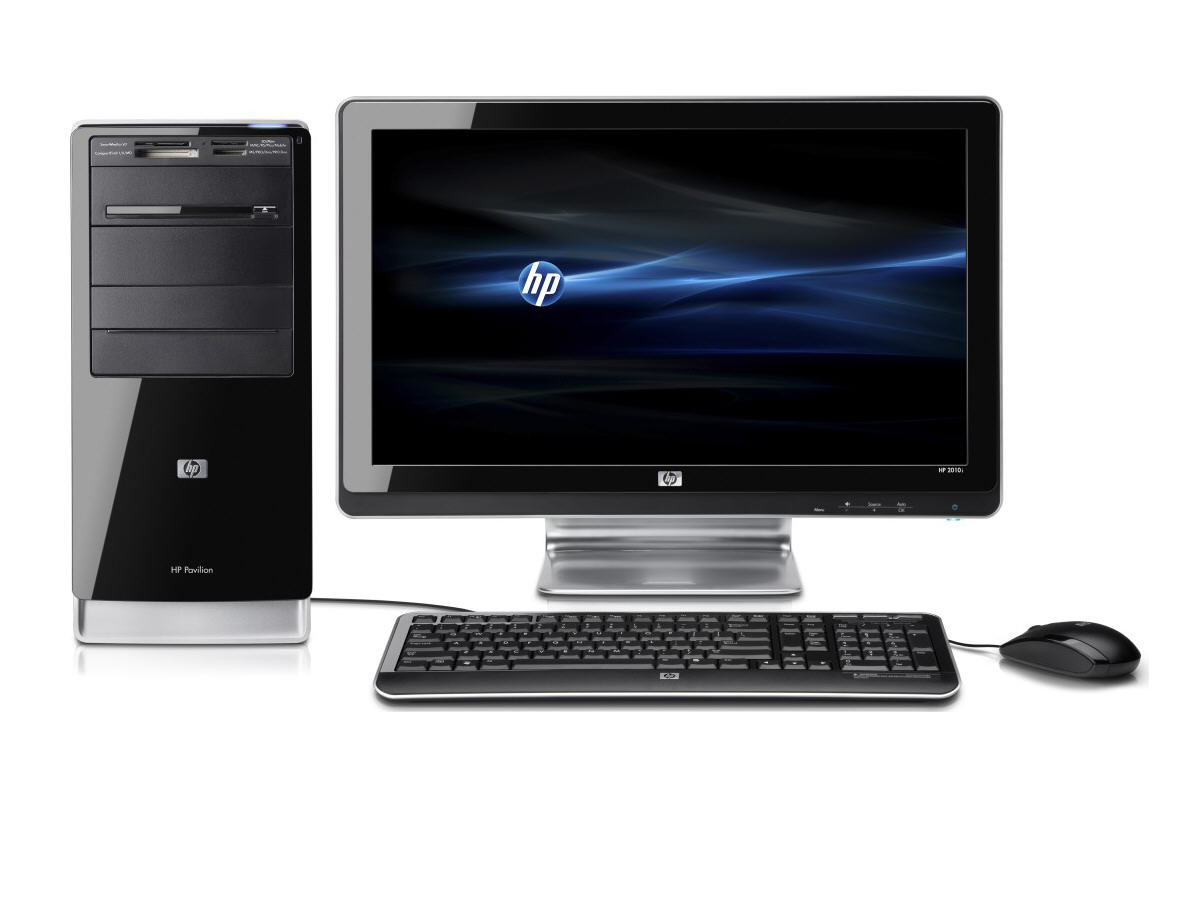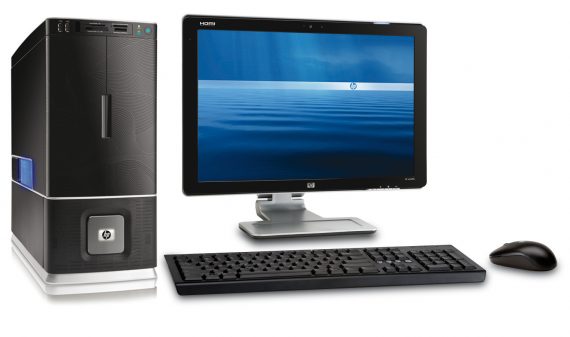| Source:- Google.com.pk |
The very first "programmable calculator/computer" was marketed in the second half of the 1960s starting with the Italianmachinery Programma 101 (1965) computer at typewriter size.[1] More desktop models were introduced in 1971, leading to a model programmable in BASIC in 1972.[2] This one used a smaller version of a minicomputer design based on read-only memory(ROM) and had small one-line LED alphanumeric displays. They could draw computer graphics with a plotter.Throughout the 1980s and 1990s desktop computers became the predominant type, the most popular being the IBM PC and itsclones, followed by the Apple Macintosh,[3] with the third-placed Commodore Amiga having some success in the mid-1980s but declining by the early 1990s.
Early personal computers, like the original IBM Personal Computer, were enclosed in a "desktop case", horizontally oriented to have the display screen placed on top, thus saving space on the user's actual desk, although these cases had to be sturdy enough to support the weight of CRT displays that were widespread at the time. Over the course of the 1990s, desktop cases gradually became less common than the more-accessible tower cases that may be located on the floor under or beside a desk rather than on a desk, as these tower cases had more room for expansion, and as this freed up desk space for monitors which were becoming larger every year. Desktop cases, particularly the compact form factors, remain popular for corporate computing environments and kiosks. Some computer cases can be interchangeable positioned either horizontally (desktop) or upright (mini-tower), such as the Quadra 700.
Influential games such as Doom and Quake during the 1990s had pushed gamers and enthusiasts to frequently upgrade to the latest CPUs and graphics cards (3dfx, ATI, and Nvidia) for their desktops (usually a tower case) in order to run these applications, though this has slowed since the late 2000s as the growing popularity of Intel integrated graphics forced game developers to scale back. Creative Technology's Sound Blaster series were a de facto standard for sound cards in desktop PCs during the 1990s until the early 2000s, when they were reduced to a niche product, as OEM desktop PCs came with sound boards integrated directly onto the motherboard.While desktops have long been the most common configuration for PCs,[4][4] by the mid-2000s the growth shifted from desktops to laptops.[5] Notably while desktops were produced in the United States, laptops had long been produced by contract manufacturers based in China, and the shift saw many desktop manufacturing plants in the United States closed by 2010. Another trend around this time was the increasing proportion of inexpensive base-configuration desktops being sold, hurting PC manufacturers such asDell Inc. whose build-to-order customization of desktops relied on upselling added features to buyers.[6]
Battery-powered portable computers had just 2% worldwide market share in 1986.[7] However, laptops have become increasingly popular, both for business and personal use.[8]Around 109 million notebook PCs shipped worldwide in 2007, a growth of 33% compared to 2006.[9] In 2008 it was estimated that 145.9 million notebooks were sold, and that the number would grow in 2009 to 177.7 million.[10] The third quarter of 2008 was the first time when worldwide notebook PC shipments exceeded desktops, with 38.6 million units versus 38.5 million units.[8][11][12][13]
The sales breakdown of the Apple Macintosh have seen sales of desktop Macs staying mostly constant while being surpassed by that of Mac notebooks whose sales rate has grown considerably; seven out of ten Macs sold were laptops in 2009, a ratio projected to rise to three out of four by 2010. The change in sales of form factors is due to the desktop iMac moving from affordable (iMac G3) to upscale (iMac G4) and subsequent releases are considered premium all-in-ones. By contrast the MSRP of the MacBook laptop lines have dropped through successive generations such that the MacBook Air and MacBook Pro constitute the lowest price of entry to a Mac, with the exception of the even more inexpensive Mac Mini (the only sub-$1000 offering from Apple, albeit without a monitor and keyboard), not surprisingly the MacBooks are the top-selling form factors of the Macintosh platform today.[14]
The decades of development means that most people already own desktop computers that meet their needs and have no need of buying a new one merely to keep pace with advancing technology. Notably the successive release of new versions of Windows (Windows 3.1, Windows 95, Windows 98, and Windows XP) had been drivers for the replacement of PCs in the 1990s but this slowed down in the 2000s due the poor reception of Windows Vista over Windows XP. Recently, some analysts have suggested thatWindows 8 has actually hurt sales of PCs in 2012, as businesses have decided to stick with Windows 7 rather than upgrade.[15] Some suggested that Microsoft has acknowledged "implicitly ringing the desktop PC death knell" as Windows 8 offers little upgrade in desktop PC functionality over Windows 7; instead Windows 8's innovations are mostly on the mobile side.[16]
The Post-PC trend has seen a decline in the sales of desktop and laptop PCs.[15][17] The decline has been attributed to increased power and applications of alternative computing devices, namely smartphones and tablet computers.[18] Although most people exclusively use their smartphones and tablets for more basic tasks such as social media and casual gaming, these devices have in many instances replaced a second or third PC in the household that would have performed these tasks, though most families still retain a powerful PC (typically a desktop) for serious work.[19]
Among PC form factors, desktops remain a staple in the enterprise market but have lost popularity among home buyers. PC makers and electronics retailers have responded by investing their engineering and marketing resources towards laptops (initially netbooks in the late 2000s, and then the higher-performance Ultrabooks from 2011 onwards), which manufacturers believe have more potential to revive the PC market[4] than desktops.
Desktop wallpaper Free Download Wallpaper Download For Mobile Free Hd for Mobile Free Image Search for Pc Love Hd 3d free For Mobile
Desktop wallpaper Free Download Wallpaper Download For Mobile Free Hd for Mobile Free Image Search for Pc Love Hd 3d free For Mobile
Desktop wallpaper Free Download Wallpaper Download For Mobile Free Hd for Mobile Free Image Search for Pc Love Hd 3d free For Mobile
Desktop wallpaper Free Download Wallpaper Download For Mobile Free Hd for Mobile Free Image Search for Pc Love Hd 3d free For Mobile
Desktop wallpaper Free Download Wallpaper Download For Mobile Free Hd for Mobile Free Image Search for Pc Love Hd 3d free For Mobile
Desktop wallpaper Free Download Wallpaper Download For Mobile Free Hd for Mobile Free Image Search for Pc Love Hd 3d free For Mobile
Desktop wallpaper Free Download Wallpaper Download For Mobile Free Hd for Mobile Free Image Search for Pc Love Hd 3d free For Mobile
Desktop wallpaper Free Download Wallpaper Download For Mobile Free Hd for Mobile Free Image Search for Pc Love Hd 3d free For Mobile
Desktop wallpaper Free Download Wallpaper Download For Mobile Free Hd for Mobile Free Image Search for Pc Love Hd 3d free For Mobile
Desktop wallpaper Free Download Wallpaper Download For Mobile Free Hd for Mobile Free Image Search for Pc Love Hd 3d free For Mobile
Desktop wallpaper Free Download Wallpaper Download For Mobile Free Hd for Mobile Free Image Search for Pc Love Hd 3d free For Mobile









Após a polêmica sobre o PS4 ter um hardware mais potente que computadores atuais e futuros, o console poderá ter apenas "potencial de um PC mediano". A declaração é do vice-presidente da Nvidia, Tommy Tomasi, que discordou do suposto poder do novo console. O executivo classificou a CPU do PlayStation 4 como equivalente a de um computador de baixa performance e a GPU do console como de baixo para médio desempenho
ReplyDeletegta 5 apk